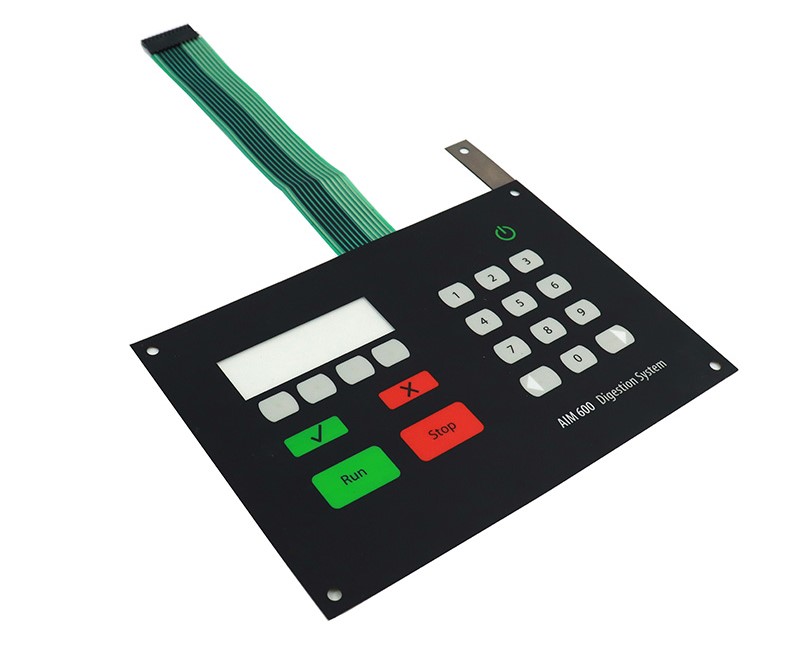Membrane switch keyboards are becoming increasingly popular in the medical field due to their reliability, durability, and ease of cleaning. These keyboards are made from a flexible membrane that is sealed between two layers of plastic. When a key is pressed, the membrane makes contact with the underlying electrical contacts, completing the circuit and activating the desired function.

Working principle of membrane switch keyboards
The working principle of membrane switch keyboards is relatively simple. When a key is pressed, the membrane is depressed, causing the conductive layer to make contact with the underlying electrical contacts. This completes the circuit and activates the desired function.
Materials and structure of membrane switch keyboards
Membrane switch keyboards are typically made from a variety of materials, including polyester, polycarbonate, and silicone. The materials used can vary depending on the specific application.
The structure of a membrane switch keyboard typically consists of the following layers:
- Key legends: The key legends are the labels on the keys. They can be printed, embossed, or laser etched.
- Graphic overlay: The graphic overlay is a layer of material that is used to protect the key legends.
- Conductive layer: The conductive layer is a layer of material that is used to complete the electrical circuit.
- Spacer layer: The spacer layer is a layer of material that is used to separate the conductive layer from the electrical contacts.
- Electrical contacts: The electrical contacts are the components that complete the electrical circuit when a key is pressed.
- Base layer: The base layer is the bottom layer of the membrane switch keyboard.
Customization of membrane switch keyboards
Membrane switch keyboards can be customized to meet the specific needs of any application. Some of the customization options include:
- Key layout: The keys can be arranged in any layout that is desired.
- Key size: The keys can be made in any size or shape.
- Key color: The keys can be made in any color.
- Key legends: The key legends can be customized with any text or graphics.
- Tactile feedback: Membrane switch keyboards can be designed with tactile feedback to provide users with a sense of touch when pressing the keys.
Application cases of membrane switch keyboards in the medical field
Membrane switch keyboards are used in a variety of medical applications, including:
- Medical equipment: Membrane switch keyboards are used in a variety of medical equipment, such as infusion pumps, ventilators, and patient monitors.
- Surgical equipment: Membrane switch keyboards are used in a variety of surgical equipment, such as surgical robots and laparoscopic instruments.
- Dental equipment: Membrane switch keyboards are used in a variety of dental equipment, such as dental drills and ultrasonic scalers.
Advantages of membrane switch keyboards for medical applications
Membrane switch keyboards have a number of advantages for medical applications, including:
- Reliability: Membrane switch keyboards are very reliable and can withstand harsh environments.
- Durability: Membrane switch keyboards are durable and can last for many years.
- Ease of cleaning: Membrane switch keyboards are easy to clean and disinfect.
- Customizable: Membrane switch keyboards can be customized to meet the specific needs of any application.
- Safe: Membrane switch keyboards are safe to use in medical environments.
Conclusion
Membrane switch keyboards are a reliable and durable choice for medical applications. They are easy to clean and disinfect, and they can be customized to meet the specific needs of any application. If you are looking for a keyboard that is safe, reliable, and durable, a membrane switch keyboard is a good option.
